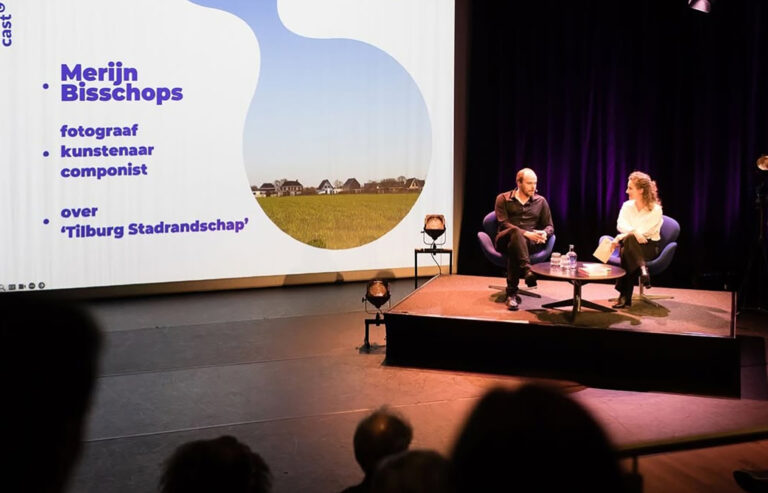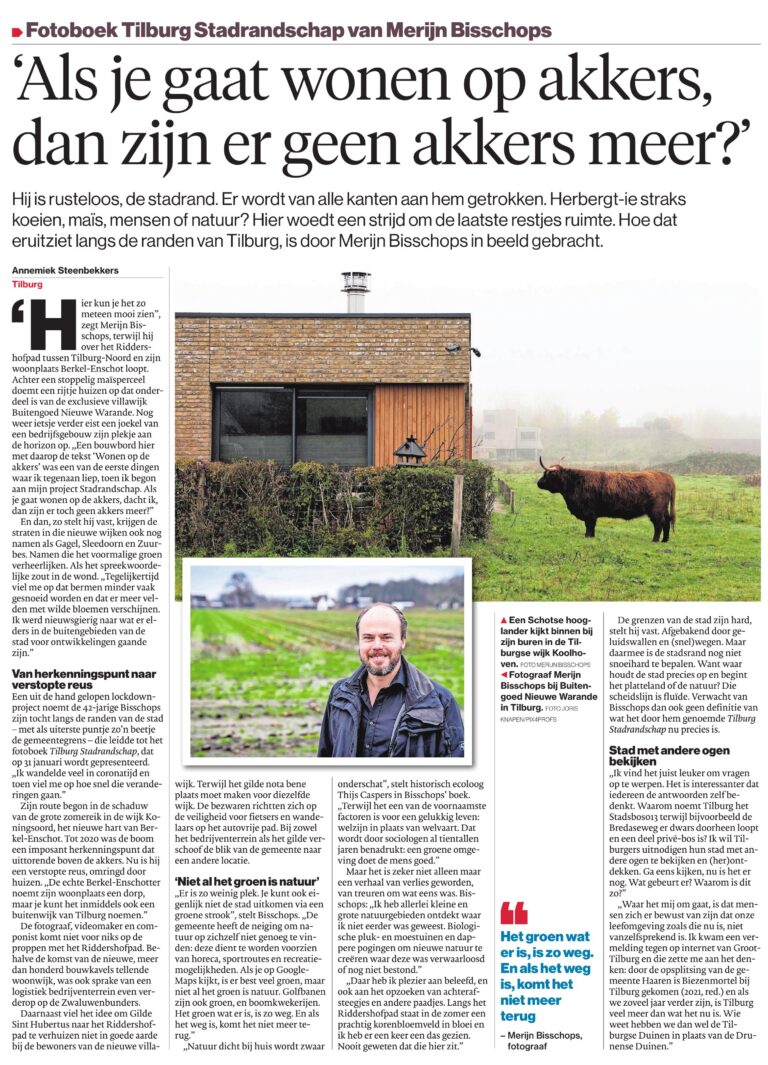about Merijn Bisschops
Merijn Bisschops is een verhalen vertellende componist en componerend filmmaker. Hij maakt interdisciplinaire performances, composities voor uiteenlopende bezettingen, videokunst en fotografie. Met muziek en beeld als basis, maakt hij telkens nieuwe combinaties met andere kunstvormen zoals dans en literatuur.
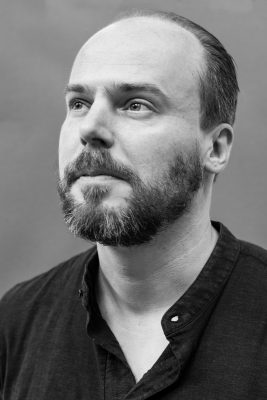
Interdisciplinary performances
Vanuit een intrinsieke drang naar artistieke verdieping weet Merijn Bisschops een unieke klank- en beeldwereld weet te creëren met akoestische muziek als middelpunt. Hij gaat complexe thema’s niet uit de weg en laveert tussen de conventies en trends in de hedendaags gecomponeerde muziek, fotografie en videokunst. Hij weet internationale topmusici en performers, die hun sporen hebben verdiend, uit te dagen op inhoudelijk en technisch vlak.
Muziek, video en fotografie
Refinement, layered textures and versatile associations characterize the music and visual work of Merijn Bisschops. They contain a rich emotional layering, which offers room for nuance and depth. Recurring themes in Bisschops' multidisciplinary work are landscape and living environment, the human psyche and reflecting on the arts themselves through art. Influences of post-minimalism and microtonality predominate in his music, which veers towards renaissance, musique concrète, noise or drones to a greater or lesser extent. A performance is more than just listening and watching; it is a moment of attention, new inspirations and meeting. A shared experience in which the sense of time fluctuates, which touches people, confuses them, makes them relax, dream away or makes them think.
International collaboration
Merijn Bisschops has worked with a variety of musicians, choreographers, festivals and performance groups, including Quatuor Bozzini (CA), Zwerm & Karen Willems (BE), A.H.J. Dautzenberg, United Cowboys, Tegest Pecht-Guido (NL/ET), Scordatura Ensemble, Saskia Lankhoorn, Tatiana Koleva, Goska Isphording, Prisma Strijktrio, Rianne Wilbers, Vincent van Amsterdam, Looptail, Lunapark, Annegret Mayer-Lindenberg (DE), en Cheng-Yu Wu (TW).
Merijn Bisschops's work has been performed and shown at, among others, November Music, Musical Utopias, Wonderfeel, Gaudeamus, De Link, Korzo, Het Orgelpark, Galerie Marzee, De Pont, Van Abbemuseum, EYE film museum, Theaterfestival Boulevard, Museum Beeld en Geluid, More than Music Festival, Hilvaria Studios, Dat Bolwerck, Museum De Wieger, LocHal, Cacaofabriek Expo (NL), Sound Plasma (DE), Arena Festival (LVA), Florianka Recital Hall (PL), 48th Dimitria Festival (GR), Procembalo (IT), NCTU Arts Center (TW), SE Center for Photography, Cinesonika (US).
Merijn Bisschops heeft niet alleen een brede ervaring in artistieke werkprocessen, maar ook jarenlange ervaring als producent, programmamaker en zakelijk leider. Hij realiseert zijn projecten als artistiek leider van interdisciplinair productiehuis Institute of Associations (IoA) sinds 2004. Van 2006 tot 2022 was hij afwisselend artistiek en zakelijk leider van De Link, concertorganisatie voor nieuwe muziek in Tilburg. In 2025 is hij tijdelijk zakelijk leider bij Pop Up Cinema en Dans Brabant.
Reversed creative processes
'I like to reverse creation processes: for example, I first work with a dancer on a dance video, where the camera perspective is leading. I then transform this into a live performance, where other artistic choices arise for practical reasons alone. This inverted creative process is the reason why I hear from audiences that my music is cinematic or that someone sees music in a photo. What I ultimately share with the audience is an aesthetic or raw, often estranging experience. The latter is essential to break the audience out of daily routines, thinking patterns and sense of time. In that state I want to tap into the rich emotional world of my audience and let them associate freely.'
Merijn Bisschops
In de pers
“Displacement 2 is built entirely around one central note. Sometimes very prominent, as in the beginning of the piece, regularly also more hidden, absorbed in the overall structure. But the most extraordinary thing in this part is 'the displacement' through the electronics. Impure sounding, like a cassette tape that has had its day. A special part, especially later on when a cadence creeps into the piano playing and the whole gets something compelling further on in that unadulterated rhythmically repetitive passage. In short, a particularly fascinating piece in which Bisschops once again shows that he belongs to the most interesting composers of his generation."
“In his two-part 'Displacement', Bisschops plays with musical realities, where the live piano playing interacts in an extremely intriguing way with a perfectly timed soundtrack of processed piano sounds. ... Melancholic microtonal piano music, which is anchored in tonality, and gives you as a listener a wonderfully indefinable feeling. The live film images have the same, disorienting effect.
“Even more impressive is the world premiere of Witness by the Tilburg composer Merijn Bisschops. He wrote his first string quartet for Bozzini, commissioned by November Music. Bisschops makes optimal use of the Bozzini's great intonation and sharp hearing. The half-hour long string quartet has a calm but self-assured structure, in which repetitive patterns and simple, radiant harmonies predominate. With relatively simple means, Bisschops sets up a completely unique, serene sound world. Dancing arpeggios on the strings also suddenly get new colour on the cheeks. Musical experiment with a narrative power. A masterstroke by Bisschops, which certainly leaves you wanting more.”
“The form of the string quartet fits perfectly with Bisschops' style of composing, 'Witness' may be his first for this line-up, but it will certainly not be his last. Leading in the first movement is a repetitive pattern of the first violin, around which the other strings circle. Gradually the music changes character, but very gradually, a bit like the landscape changes when you look outside from a moving train. Also beautiful is the rhythmic pattern in the high spectrum, sounding like a swarm of insects. The middle section has something dark and disruptive, in which the cello plays a major role. In the third part, the repetitive patterns return and the circle closes.”
"Finally, and it is makes for a perfect ending, Merijn Bisschops' 'Tangents' sounds, postrock mixed with contemporary composed. Bisschops drags the listener along, thanks to the tight structure and the strong interwoven, hallucinating sound world.
“New work for Scordatura and the Partch-instruments alse sounded tonight. Tilburg composer Merijn Bisschops took up the challenge and provided the surprise of the evening with his brand new Tangents. A strong work in which Bisschops reverses the Partch idiom and chooses for a fixed, almost minimalistic composition. A ritualistic work in which the extraordinary sounds are carefully probed. With her graceful vocalising singer Schmid offers emotional foundation. For the first time the harmonic canon sounds, a psaltery in pure tuning. The leading role is for the adapted viola by ensemble leader Elisabeth Smalt. On this extra long-necked viola Smalt plays soul-carving, dramatic notes that pierce through the etherial soundfabric.”
“But Scordatura takes it further: they also ask present day composers to write for Partch’ microtonale instruments. A world première by Merijn Bisschops proves how fruitful that approach can be. Bisschops’ Tangents started from a crystal-clear fifth, that is opened up though a cycle of collective respirations into a rainbow-like wealth of colours, full of quasi-electronics effects like oscillating tones and tape delay.”

“As in Textures I took one of my photos as an inspirational source. It limits me, but at the same time gives direction to the music. The shades of grey, the minimalism, the rhythm. These elements lead to music that is different from when I would have used an image with lots of different colours, shapes and textures. The music is calm, demure, foggy.”
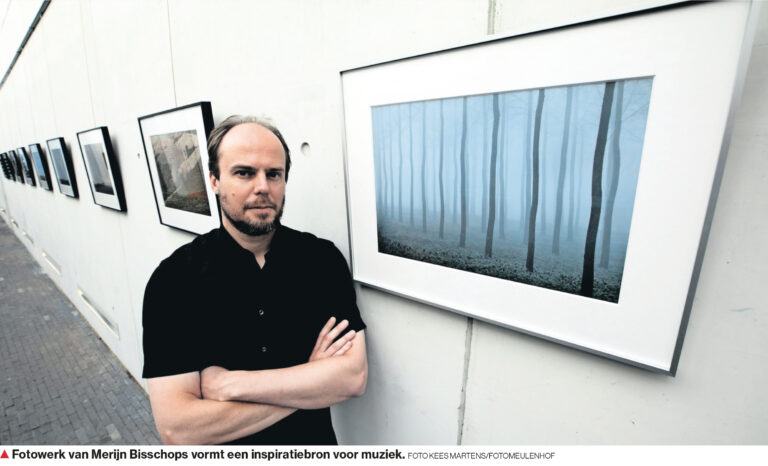
“One of the many highlights of the festival November Music was Crash Blossom by composer and cinematographer Merijn Bisschops. … A performance with so many layers and implications, that you should see it multiple times to uncover everything.”
“From this description you could derive that the performance is quite heavy handed, but that is not always the case – the reactions of the ‘real’ Rianne on her blossoming image often have an unmistakable comical effect, and also the ‘act’ of the film itself (when you can speak of such a thing in regard to this sequence of poetical images) has her humoristic moments, even or especially during intense moments, like the scene where a fully collapsed Blossom awakes on stretch of grass and is poked by a robot lawn mower.”
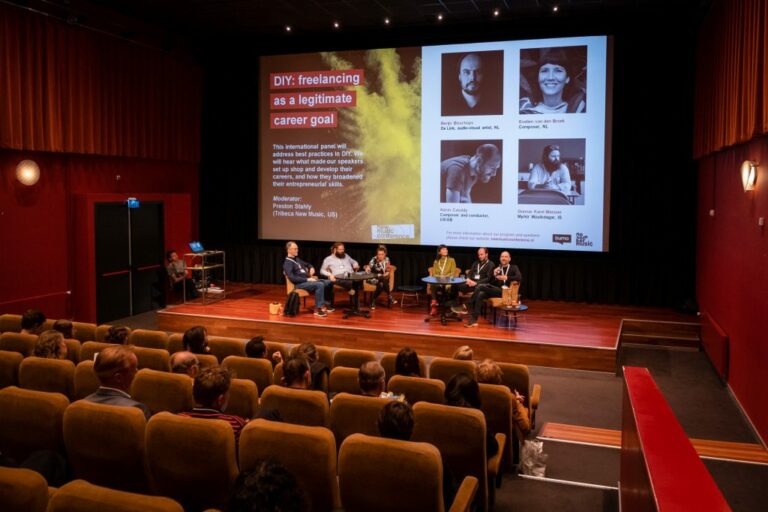
“Crystal-clear images of landscapes that shaped over millions of years. Those are the inspirational source of photographer and composers Merijn Bisschops. His work ‘Textures’, that could be heard during the Kunstmuziekroute, was one of the highlights of the festival November Music.”
“Bisschops is a composer, but since a few years also active as a photographer and film maker and he strives to create total artworks in which diverse art forms are interwoven in a logical and inextricable manner. With ‘Textures’ he certainly succeeded in that.”
“Exceptionally impressive was the work by composer and photographer Merijn Bisschops. He combined razor-sharp projected photos of beautiful desolate landscapes in which millions of years of geological processes where visible, with music for string trio. The music was as layered as the images, sometimes abrasive and harsh, sometimes sensitive and full of tender colours.”
“During concerts the composition is performed while a selection of photo’s is projected in a slow sequence behind the musicians. There is plenty of time to absorb the details, both of the music and the images. They are of enchanting beauty, in terms of colours and shapes. But even though the photos are crystal clear, it is not always obvious what you are looking at. You have no idea of dimensions and distances. Something similar can be found in the music, a fragile ambiguity and a wealth of colours that are at times melancholic. Occasionally you would swear that a human voice arises from the trio of violin, viola and cello. What is special is that the music is never a direct translation of the images. Existing links are indirect, associative.
“Bisschops heeft een volgende stap gezet in de presentatie van dit werk door het uit te brengen in de vorm van een fotoboek, met op bijkomende cd een opname van de muziek. Hij heeft gekozen voor een uitzonderlijk formaat, 39 x 26 cm. Daardoor komen de foto’s, die zich in een enkel geval uitspreiden over twee pagina’s, goed tot hun recht. Doordat beeld en geluid losgekoppeld zijn gaat elk een eigen leven leiden. De synchroniciteit maakt plaats voor een afzonderlijk beleven van de twee elementen. Dan blijkt de muziek sterk genoeg om op zichzelf te staan, en wordt het zo mogelijk nog suggestiever. Als boek met cd is ‘Textures’ een uitgave om steeds weer bij terug te keren, te dolen door schimmige, nevelige, van kleur verzadigde (muzikale) landschappen. Het zijn beelden van onze eigen aarde, maar ook beelden die je graag zou dromen. Beelden die zich niet in hokjes of laatjes laten stoppen.”
“Merijn Bisschops chose a different approach for And Action! and translated very precisely varying paramaters of scenes from B-action movies in sound: film music, but different. … For the strong final scene percussionist Rachel Xi Zhang stomped with a wooden stick on a box in the highest concentration to direct a slow pulse. Music, that theatrical image suggested, is in a way also visual art.”
